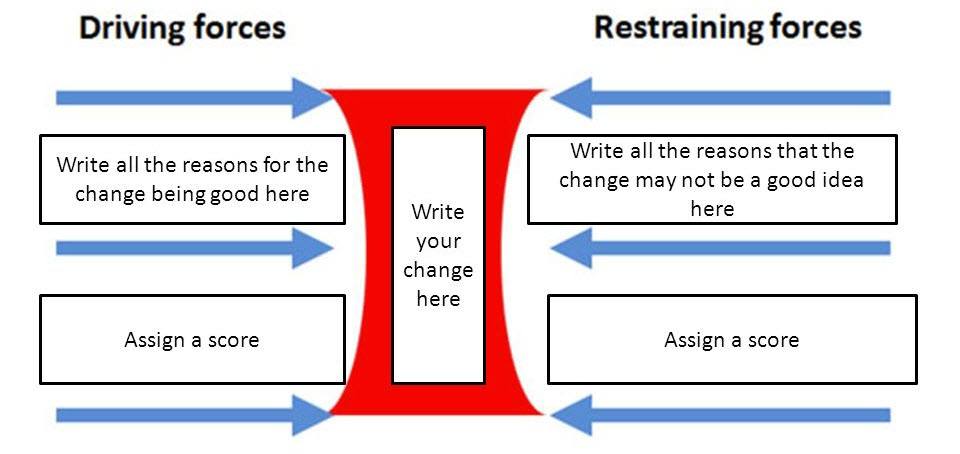Lewin’s force field analysis is a strategy which can be used to identify, discuss and document the elements that oppose or support a change initiative. This analysis was invented by Kurt Lewin, a social psychologist in the 1940s and it is often applied to the making of a ‘yes’ or ‘no’ decision on possibly upsetting changes in business.
The Kurt Lewin’s force field analysis is a very prevailing technical tool used to comprehend the moves needed for change in both personal and corporate environments.
Lewin developed the model of change popularly known as ‘Lewin’s Freeze Phase’. This change model is still the underlying foundation of a lot of change management theories strategies and models. The aspect of people about change is the overwhelming problem and because of the high rate of failure of a lot of change initiatives, it is obvious that managing a change requires sensitive skilled leadership.
Force
A force could either assist in attaining the general goal (driving force) or obstruct the attainment of the goal (hindering force). According to Lewin, companies are an arrangement of interactive and dynamic forces which are operating collectively in opposite directions. For a positive change to happen, the driving forces must overcome the hindering forces, thus adjusting the equilibrium.
The Lewin’s force field analysis can help an organisation to;
- Identify new ideas or areas which can be executed to assist the effective carrying out of the change.
- Choose whether or not to suggest a change initiative.
- Find out how to impact every target group.
- Improve the probability of success by upholding the driving forces while causing the hindering force to weaken.
- Identify the most prominent stakeholders and their group of interest.
Some other benefits the Lewin’s force field analysis offers are that it assists in;
- Aligning a team on the change.
- Rousing the team to take action as change is usually more challenging than initially thought.
- Designing robust strategies to completely address the problems which are hindering the change.
- Making everybody develop and achieve a future targets the fulfillment of interests for the relevant parties.
The Practical Application of Lewin’s Force Field Analysis
The Lewin’s force field analysis is carried out in the steps below;
- Have a brainstorming gathering involving every of the major stakeholders of the organisation. Doing this will assist in generating ideas on the forces which have an effect on the project.
- Illustrate the present situation as well as the anticipated future state. Every stakeholder should be made aware of this including the effect of dong nothing to find the necessary solution.
- With assistance from various participants, generate the list of driving and hindering forces using the questions below;
- Who is against the change and the reasons?
- Who is in support of the change and the reasons?
- What are the advantages of the project?
- What are the threats posed by this project?
- What are the restrictions encountered by the project?
- Now write out the driving forces on the left side.
- Write out the hindering forces on the right side.
- Collate the outcomes of the brainstorming meeting and examine the validity. Rate the urgency and significance by allocating weights to each of the forces, 1 being the weakest and 10, the strongest; the total of the cumulative forces on either side determines the dominant side.
- Find out if the change is feasible. By reducing the weight of obstructing forces and increasing that of the driving forces, change could be influenced although this might now present new forces which would have to be assessed further.
Why Make Use of Lewin’s Force Field Analysis
The Lewin’s force field analysis helps to comprehend;
- Why people don’t want change.
- How to communicate the ‘yes’ or ‘no’ decisions.
- How the pressures ‘for’ and ‘against’ a change can be analysed that is, the advantages and disadvantages of that particular change.
- How to transition people through change.
- How to make use of a better decision making strategy.
Lewin’s force field analysis makes us pay attention to the necessary components to bring about change. It creates this change by;
- Analysing the driving force as well as the hindering force which affects a change from the present state to future state. The hindering forces might include the reactions of the people who see the change as being unnecessary or being a threat.
- Assessing the driving and restraining forces. Which ones are most critical?
- Taking the vital steps to increase significant driving forces as well as reducing the critical hindering forces.
